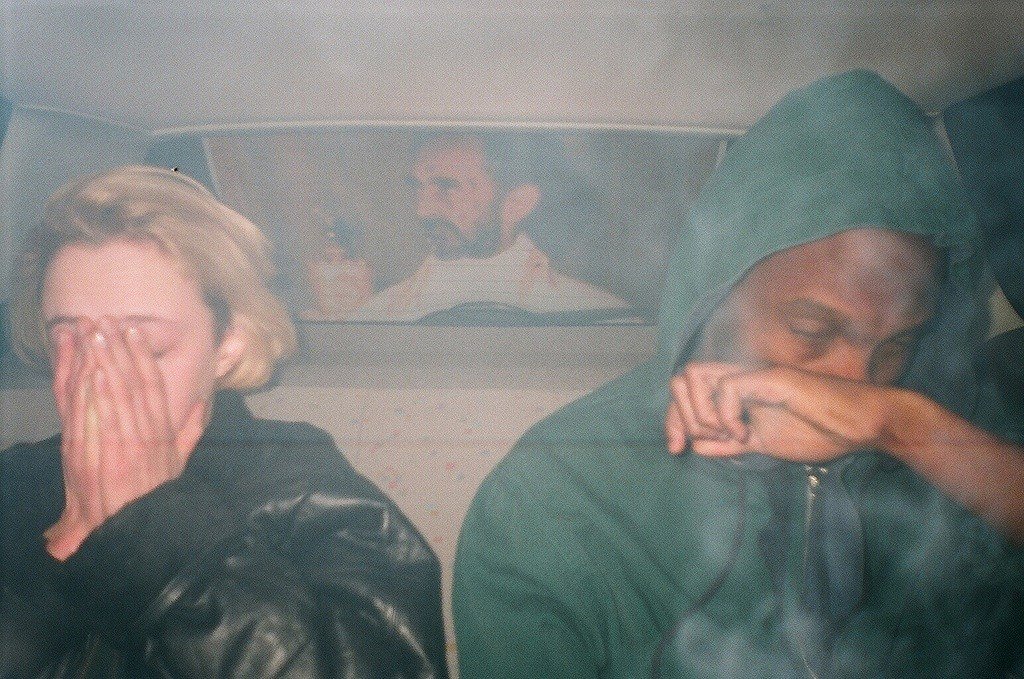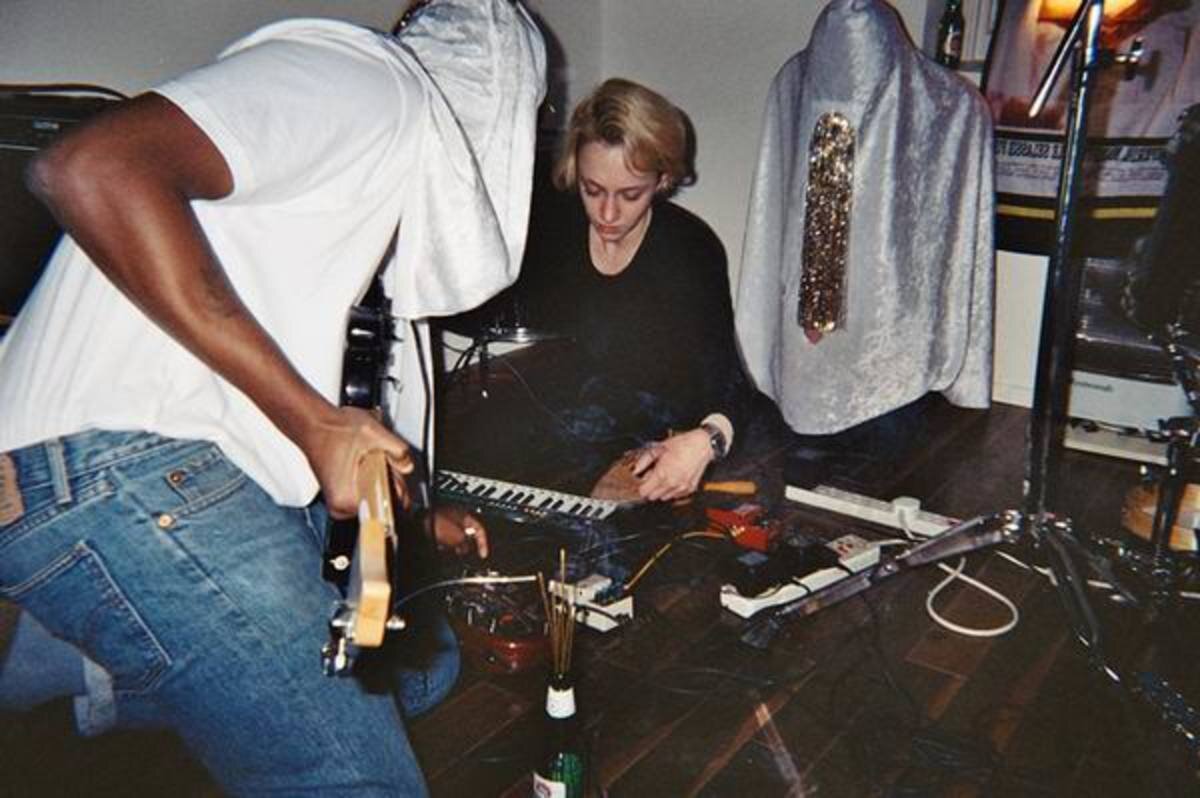The Other
Inga Copeland and Dean Blunt
For around a year, I have found myself obsessed with a certain British experimental musician by the name of Dean Blunt. His work spans all kinds of genres and he hides releases under various different monikers; his entire presence as an artist is essentially one never-ending rabbit hole.
For maybe a quarter of a year now, give or take a few months, I have been trying to piece together how exactly to approach writing about his music. He has taken up enough of my listening rotation to warrant multiple Pitchfork 2 articles, but there’s a catch: his music is extremely difficult to clearly write about.
As I mentioned, Blunt often drops music under side-projects. These projects include experimental hip-hop “trio” Babyfather, the undefined Bo Khat Eternal Troof Family Band collective, a (seemingly) one-off R&B project called Blue Iverson, and perhaps the most enigmatic of all: Hype Williams. I’m choosing to write about Hype Williams today. Instead of just ignoring the idea of writing about Dean Blunt, this is my attempt to grab the bull by its horns and counteract the writer’s block that came with listening to increasingly more abstract and experimental music.
Enter Inga Copeland. Along with Blunt, she is Hype Williams. Or, they were Hype Williams. Allegedly, Hype Williams is a collaborative art project—passed between different duos of artists every few years—spearheaded by an even more mysterious figure named Denna Frances Glass. The project has supposedly been passed down to two younger musicians named Slaughter and Silvermane, who were apparently behind 2017’s Rainbow Edition, Hype Williams’ most recent (and messiest) release. If it sounds like I’m skeptical of all of this information, it’s because I am. Nearly all of the Hype Williams music released since 2012, the year in which the project was supposed to be passed on from Blunt and Copeland, are speculated to have been created by Blunt himself, one of his associates from his label, World Music, or by fakers.
Regardless, Dean Blunt and Inga Copeland—those aren’t either of their real names, by the way—began to release music under the Hype Williams project in 2009. Their first few releases spanned the genres of ambient, dub, and hypnagogic pop, culminating in their 2010 album Find Out What Happens When People Stop Being Polite, and Start Gettin' Reel. This release, a lo-fi, early-vaporwave collage of samples and static, specifically represents the legacy Hype Williams left and is remembered still as one of their defining projects. Find Out What Happens is a great project, featuring some of my favorite Hype Williams moments (particularly ‘The Throning’), but to me, it feels like Blunt and Copeland did not realize the extent of their artistic relationship until they released One Nation just a few months later in March of 2011.
Hopefully by now it’s understandable why I’ve avoided writing about this for so long. It’s confusing without the actual music being factored in, and the music only makes the story more convoluted. To backpedal a bit, and to add even more ambiguity into this entire situation, it’s often implied that Blunt and Copeland were involved romantically as well as artistically. Much of Blunt’s earlier solo work, which I’m not going to focus on too much here, took the form of bizarre, rather haunting concept albums about doomed relationships and break-ups, made most clear on 2012’s The Narcissist II and 2013’s The Redeemer. These albums followed Black Is Beautiful and The Attitude Era, both of which saw the Hype Williams name being dropped; they were instead released under “Dean Blunt & Inga Copeland.” My point here is that aside from a few EPs, remixes, and bootlegs, One Nation was the final true Hype Williams release, and it’s the album on which Blunt and Copeland best explore and define their artistic relationship.
Now, this is the point in this article where I can take the reins a bit and introduce more confusing information, but this time on my own terms.
On November 30, 1975, Serbian artist Marina Abramović and German artist Ulay supposedly first met. It was both of their birthdays, and by the end of 1976, they had fallen in love and were collaborating on some of the most evocative performance art of the time. Their performances together, called “relation works,” served as a deconstruction of identity, individuality, the ego, the human body, and their relationship. The couple strove to create a collective “two-headed body” that they called the Other, which was a genderless, ego-less, identity formed by complete trust between them. Their goal in creating the Other was to put their individual egos aside and achieve a sense of unity and uniformity in their artistic relationship.
The most notorious relation work was a 1980 piece titled Rest Energy. This performance found Abramović and Ulay balanced with a bow and arrow—the arrow being held by Ulay, pointing directly toward Abramović’s heart. Whether it was a commentary on mortality, traditional gender roles in a heterosexual relationship, or anything else, it was most of all one thing: a complete act of trust and a prime example of the two achieving the Other within their art.
Now, fast forward to somewhere between 2009 and 2012. Imagine a dark room filled with smoke from incense and marijuana. In the middle of the room stands a tall, bald, black man with headphones, playing on a lo-fi sounding keyboard. Facing him, across the table, is a short white woman wearing a large black t-shirt. Every so often, one of them picks up a microphone and says a few words into it, or sings. Miraculously, the two figures are working completely in sync.
In these ten minutes, Dean Blunt and Inga Copeland created the Other. The energy within the smoked-out Boiler Room set is lethargic and hazy, yet the two performers clearly understand and play off of each other. Neither of their egos are in each other's way; just as Abramović and Ulay strove to do, Blunt and Copeland functioned as parts of a “two-headed body,” but instead of calling it the Other, they called it Hype Williams.
Aside from the Boiler Room show, which contains mainly music from their Find Out What Happens project, I think that One Nation displays this synergy as well, albeit less obviously. It’s certainly an ominous and intentionally obscured record; the album cover is a very faint Hype Williams logo (a peace sign made of a dog and cat touching their paws together) in a white background, and it was initially composed of 13 untitled tracks. It sounds like a strange middle ground between Boards of Canada, unintentionally experimental ‘90s pop R&B, early house music, and hauntology, all left in the pocket of a pair of pants that was run through a washing machine.
I already went over how difficult it is to write about the music itself when it comes to Dean Blunt, but I’m going to try my best without delving too deep. At this point, I can’t really speculate on the presence of the Other, because the best I can do with Dean Blunt’s music is explain how it makes me feel. I suppose the climax of the album comes with track eleven, ‘Jah’, and the following ‘Break4love’. The former track is a de-tuned, chaotic jam session featuring lo-fi drums, a blaring synth, and the harrowing combination of a squeaky flute and a voice screaming out. It’s one of the most evocative tracks on the release to me, and it always paints a picture of unsettlement. The latter track is an absolutely beautiful ambient piece that I could best describe as serene. The immediate contrast between the two songs makes for a pretty obvious and drastic tone-shift, and it gives the album a closure that is equally comforting and haunting. It feels like someone saw me having some issues and told me that everything will be alright, and I somehow knew that they were telling the truth.
To jump backwards in the tracklist the second track of One Nation, called ‘Untitled’, features a similarly harrowing-yet-comforting spoken-word sample about death from Vito Acconci, another performance artist who was operating in a very similar realm to Abramović and Ulay around the same time. To me, this feels like confirmation that Blunt and Copeland took cues from 1970s performance art when working as Hype Williams, and provides some evidence (not substantial evidence, but it’s something) that the project may have been the two musicians’ version of the Other.
Unfortunately, just like Abramović and Ulay’s relationship came to an end after over a decade of some of the greatest performance art of all time, the two halves of Hype Williams split up and began to make their own work. Ulay and Inga Copeland continued to create boundary-pushing and inspiring art in their own right, but will always be remembered for their work with their counterparts. Marina Abramović went on to become debatably the most famous performance artist ever with 2010’s The Artist Is Present, followed by a documentary of the same name. Dean Blunt has gone on to have a prolific career in the experimental scene as well; 2014’s Black Metal is his most well-known and well-received album to date.
I’m going to be honest, I have been trying to write about One Nation for months. I have been creatively challenged by doing so, and it turns out that the key was just to take a different approach. I had about a page’s worth of ideas for writing about the music itself, but I realized that looking at Hype Williams as a band is reductive. Looking at it as a collaborative performance art project, a means of finding the Other, is a much more accurate lens. Hopefully, upon reading this, you can understand why I had so much trouble writing about this.
I’m not entirely sure how to conclude this. I’m eternally grateful that I’ve found Dean Blunt’s music, and I’ve enjoyed hours just picking apart his albums and projects. I’ve read plenty about performance art recently, which has only added perspective to his work. Whether the ties between performance art and this music make sense or are just me connecting two topics that have taken up tons of space in my brain recently, it’s difficult for me to deny that Hype Williams was one of the most dynamic artistic relationships since Abramović and Ulay.
By Jack



